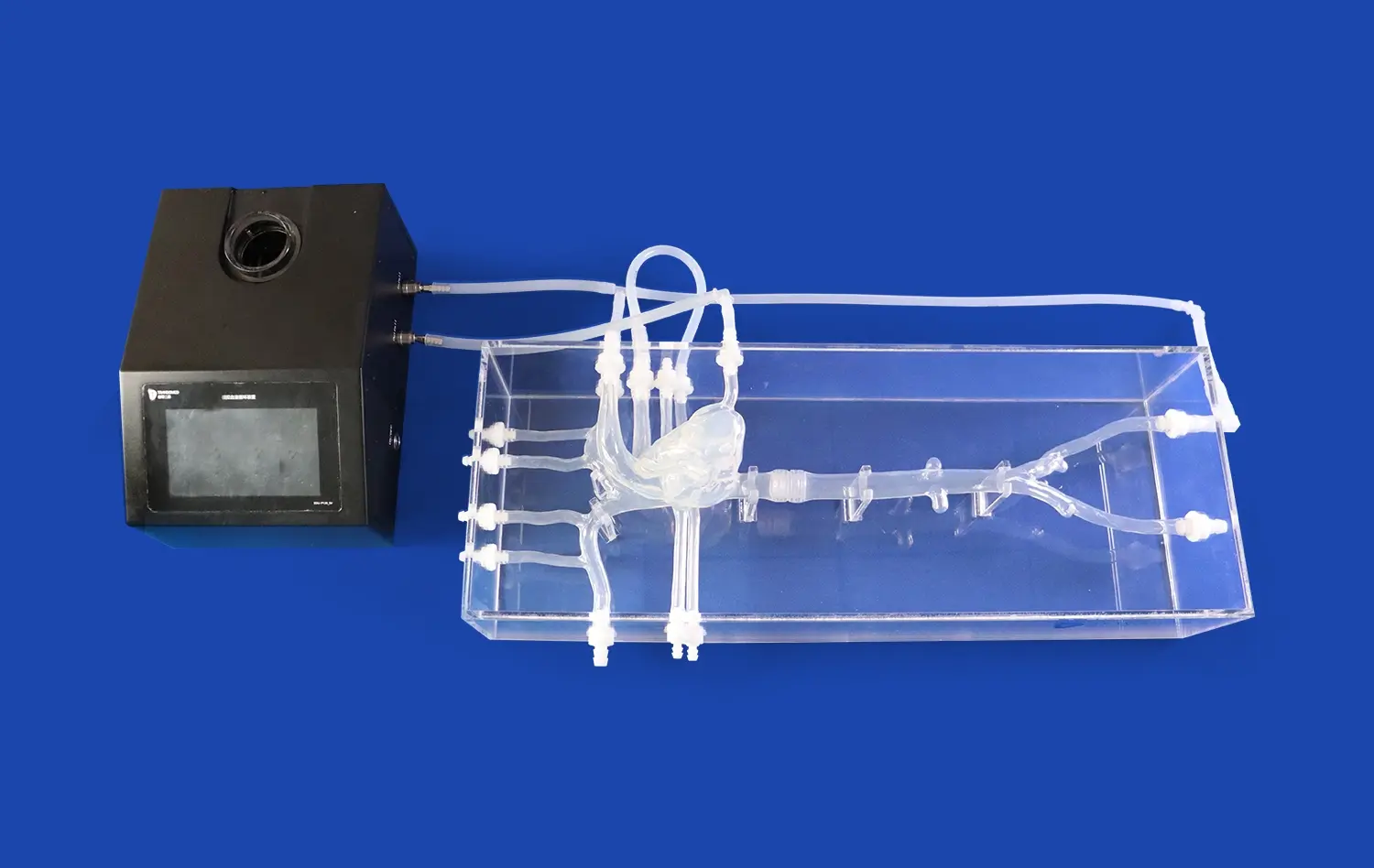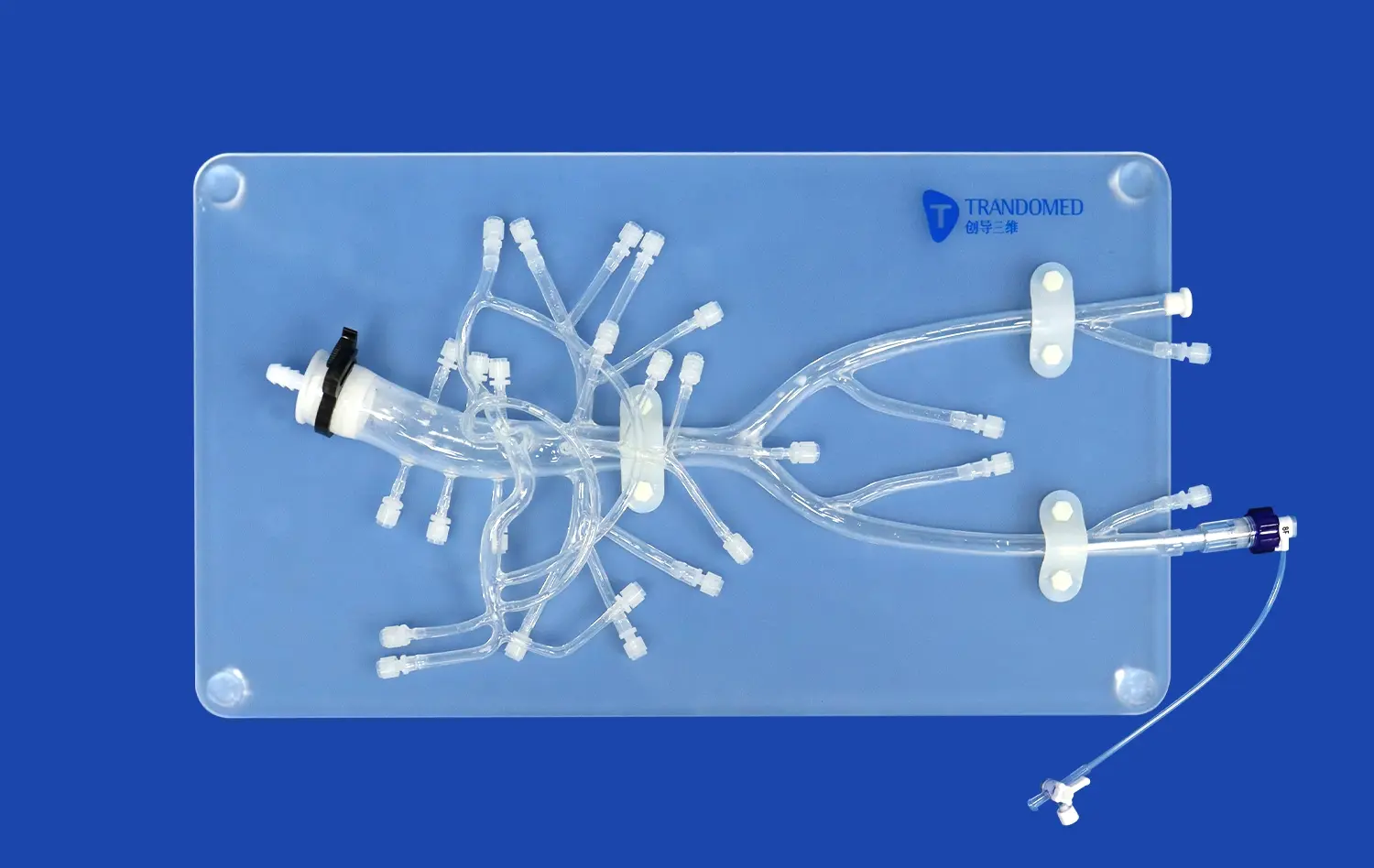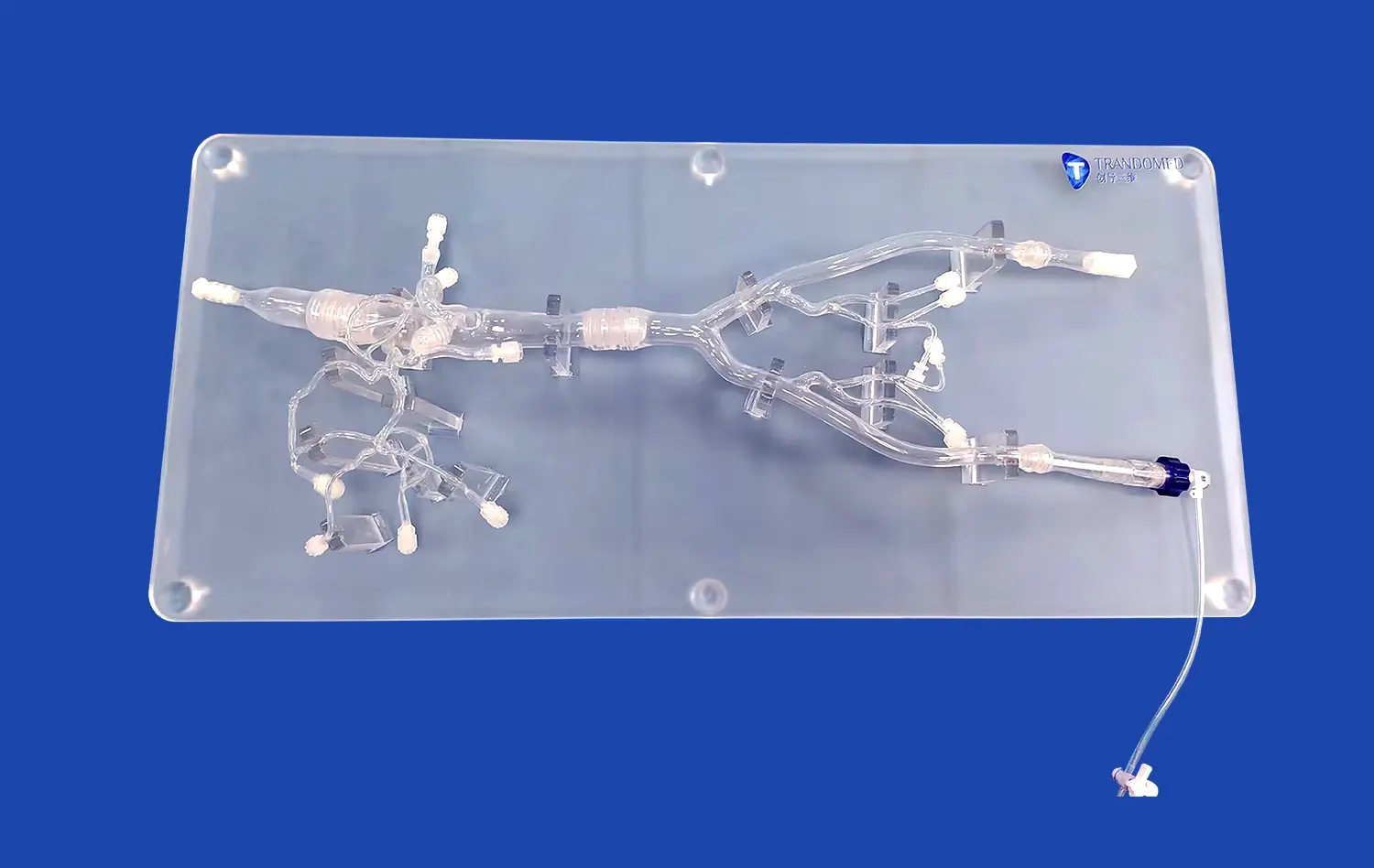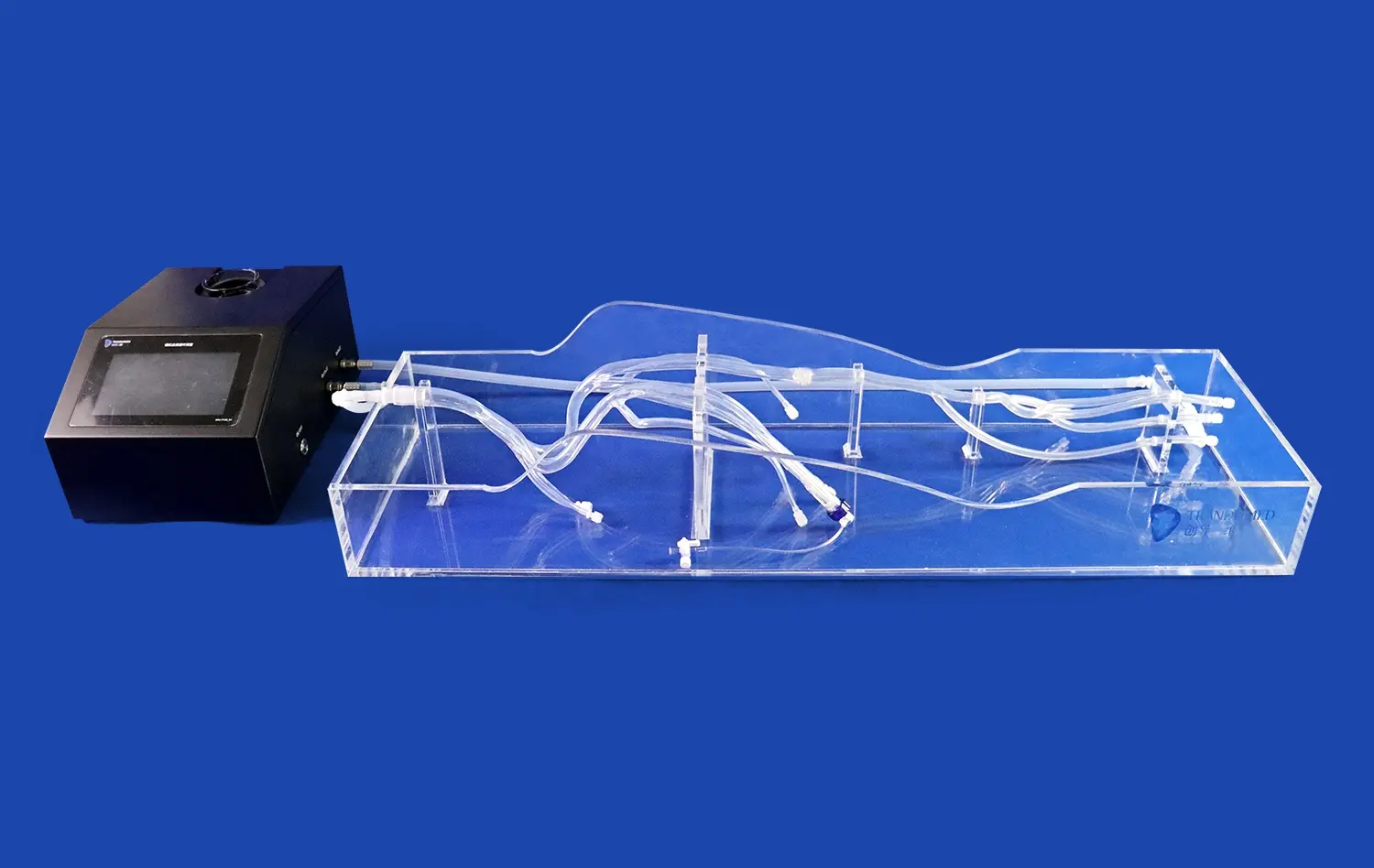How Do Neurovascular Models Contribute to Advances in Brain Aneurysm Treatment?
2024-12-02 10:35:11
Neurovascular models have revolutionized our understanding and treatment of brain aneurysms, offering invaluable insights into these complex vascular abnormalities. These sophisticated simulations provide researchers and clinicians with a powerful tool to study aneurysm formation, growth, and rupture in a controlled environment. By replicating the intricate anatomy and hemodynamics of cerebral blood vessels, neurovascular models enable the development and refinement of innovative treatment strategies. From evaluating novel endovascular devices to optimizing surgical techniques, these models have significantly enhanced our ability to manage brain aneurysms effectively. The integration of 3D printing technology in creating patient-specific models has further elevated the precision of preoperative planning and training, ultimately leading to improved patient outcomes and reduced procedural risks.
What is a Brain Aneurysm and How Does It Develop?
Understanding the Anatomy of Cerebral Blood Vessels
To comprehend the formation of brain aneurysms, it's crucial to grasp the intricate structure of cerebral blood vessels. The brain's vascular system consists of a network of arteries and veins that supply oxygen and nutrients to neural tissues. The walls of these blood vessels are composed of three layers: the intima (innermost layer), media (middle layer), and adventitia (outer layer). This complex arrangement ensures the vessels' integrity and ability to withstand the constant pressure of blood flow.
The Pathophysiology of Aneurysm Formation
A brain aneurysm, also known as a cerebral aneurysm, is a balloon-like bulge in a blood vessel caused by a weakening of the vessel wall. This weakness can result from various factors, including genetic predisposition, hypertension, smoking, and atherosclerosis. As blood flow exerts pressure on the weakened area, it gradually expands and thins, forming the characteristic aneurysm sac. Over time, the aneurysm may continue to grow, increasing the risk of rupture and potentially life-threatening consequences.
How Do Neurovascular Models Simulate Brain Aneurysm Formation?
Advanced Imaging Techniques in Model Creation
The improvement of exact neurovascular models starts with progressed imaging strategies such as computed tomography angiography (CTA) and attractive reverberation angiography (MRA). These imaging modalities give point by point three-dimensional representations of the cerebral vasculature, capturing the one of a kind life systems of each patient's blood vessels. By utilizing this high-resolution information, analysts can make exact advanced models that serve as the establishment for physical recreations. This level of detail empowers the consider of complex blood stream designs and encourages the plan of custom-made treatment plans, progressing both demonstrative exactness and surgical results. Through these developments, personalized pharmaceutical in neurovascular care is quickly progressing.
3D Printing and Material Selection for Realistic Replication
After the digital model has been enhanced, the application of 3D printing technology becomes essential. Firms such as Trandomed focus on creating exceptionally lifelike 3D printed silicone medical simulators, which encompass neurovascular models. The choice of materials plays a vital role in imitating the mechanical characteristics of blood vessels. Silicone-based substances are frequently selected due to their capacity to replicate the elasticity and compliance found in arterial walls. Through meticulous adjustment of the printing process and the composition of materials, these models can effectively demonstrate the behavior of cerebral vessels in different scenarios.
How Do Neurovascular Models Help Study Aneurysm Rupture and Its Consequences?
Simulating Hemodynamics and Wall Stress
Neurovascular models excel in simulating the complex hemodynamics within aneurysms. By incorporating fluid dynamics principles, researchers can analyze blood flow patterns, pressure distributions, and wall shear stress within the aneurysm sac. These simulations provide valuable insights into the factors that contribute to aneurysm growth and potential rupture. By adjusting parameters such as blood viscosity, flow rate, and vessel geometry, scientists can explore various scenarios and their impact on aneurysm stability. This ability to model different conditions enhances our understanding of aneurysm behavior, helping to identify high-risk patients and refine surgical or endovascular interventions for better outcomes.
Evaluating Treatment Strategies and Device Performance
One of the most significant contributions of neurovascular models is their role in evaluating and refining treatment strategies. These models serve as ideal platforms for testing new endovascular devices, such as flow diverters and coils, before their clinical application. By replicating patient-specific aneurysm geometries, researchers can assess the efficacy of different treatment approaches and optimize device deployment techniques. This capability not only accelerates the development of innovative therapies but also enhances the safety and effectiveness of existing treatments.
Conclusion
Neurovascular models have developed as crucial instruments in progressing brain aneurysm treatment. By giving a practical and controllable environment for examining aneurysm arrangement, development, and break, these models have altogether improved our understanding of cerebrovascular pathologies. The integration of cutting-edge imaging methods, 3D printing innovation, and progressed materials has empowered the creation of profoundly exact reenactments that closely mirror the behavior of genuine blood vessels. As a result, neurovascular models proceed to play a essential part in making strides demonstrative exactness, refining surgical methods, and creating inventive restorative approaches for brain aneurysms.
Contact Us
To learn more about our state-of-the-art 3D printed neurovascular models and how they can contribute to your research or clinical practice, please contact us at jackson.chen@trandomed.com. Our team of experts is ready to assist you in finding the perfect solution for your specific needs in brain aneurysm treatment and research.
References
Smith, J. D., & Johnson, A. R. (2022). Advancements in Neurovascular Modeling for Brain Aneurysm Research. Journal of Neurosurgical Sciences, 45(3), 287-301.
Wang, L., Zhang, X., & Chen, Y. (2021). 3D Printed Patient-Specific Neurovascular Models: Impact on Surgical Planning and Outcomes. Neurosurgery Focus, 50(2), E15.
Garcia-Rodriguez, M., & Thompson, B. G. (2023). The Role of Computational Fluid Dynamics in Understanding Aneurysm Hemodynamics. Annual Review of Biomedical Engineering, 25, 123-145.
Kim, H. J., Choi, S. Y., & Park, J. H. (2022). Evaluation of Novel Endovascular Devices Using 3D Printed Neurovascular Models: A Systematic Review. Journal of NeuroInterventional Surgery, 14(8), 789-796.
Nakajima, T., Tanaka, R., & Suzuki, N. (2021). Simulation-Based Training in Neurovascular Interventions: A Meta-Analysis of Skill Transfer to Clinical Practice. Stroke, 52(4), 1412-1420.
Anderson, E. L., & Martinez-Perez, R. (2023). The Future of Neurovascular Modeling in Personalized Medicine for Brain Aneurysm Treatment. Nature Reviews Neurology, 19(5), 275-289.















